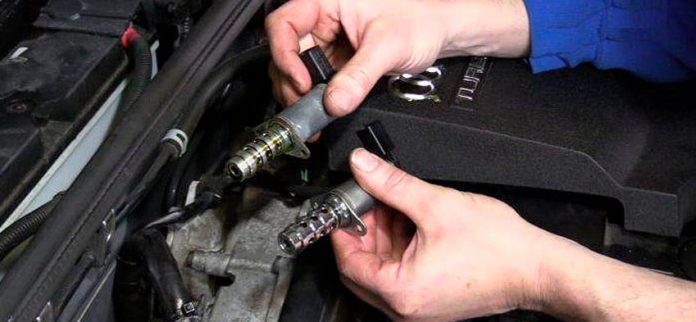
VVT or Variable Valve Timing (VVT) has been and will always be one of the most significant advances in the history of automotive innovation. In modern cars, VVT systems are used to improve performance and fuel economy by varying the timing of the valves. This ensures that the right amount of oil is supplied, allowing the engine to operate with excellent performance and fuel economy. It is a technology that uses an electronic system with variable valve timing geometry via a solenoid. If this VVT solenoid fails, improper lubrication can cause serious damage and subsequent failure of the gear train and timing chain.
Here are the symptoms you should look out for to know that the VVT solenoid is faulty or not working properly:
1. Check Engine Light
In modern cars, this is an indicator light for the engine management systems, it starts warning you as soon as it detects any problem with the engine. In fact, it can monitor almost the entire car. So, if the solenoid is faulty, the indicator light will make itself known.

If this happens, you should go to the nearest auto repair shop and have a certified mechanic check the car. The auto repair shop can certainly help you diagnose the problem and reset the check engine light.
2. Dirty Engine Oil
This is also one of the reasons for the solenoid failure. The VVT solenoid system works best with clean engine oil. When there are a lot of impurities in the oil, it loses viscosity. Dirty oil can cause clogging of the solenoid system, which will subsequently lead to clogging of the chain and gears.
If you see dirty engine oil, then there is a chance that the VVT solenoid system has failed.
3. Rough engine idle
The supply of additional oil to the VVT gears is possible if the system begins to work incorrectly. This is the phenomenon that manifests itself when the engine idles. This is primarily because the engine speed fluctuates. Ignoring this symptom can cause premature engine wear.
4. Poor Fuel System Efficiency
The VVT function is to control the timing of valve opening and closing to maximize fuel economy. Any malfunction here can result in fuel loss or reduced performance. If you notice an increase or decrease in fuel consumption, the valve timing sensor or another part of the VVT system is likely faulty.
Once you have diagnosed the problem with the VVT solenoid, it is best to have it replaced by our auto repair shop or do it yourself. Ignoring this problem can lead to very unpleasant results, such as a sharp drop in engine performance, premature engine wear and a noticeable increase in fuel consumption.
,
VEBER-AUTO Car Service
194044, St. Petersburg
Neyshlotskiy Pereulok, Building 5, Building 3
District: Vyborgskiy
Metro: Vyborgskaya – 800 m.
,
Seven days a week, from 9:00 to 21:00.
,
sto@veberauto.ru
,
8 (812) 321-00-00









